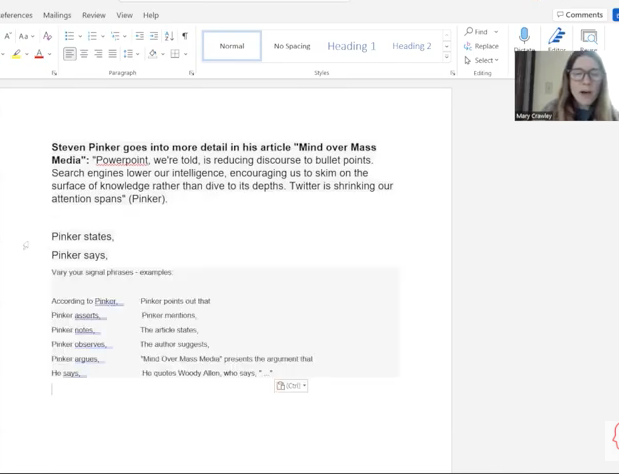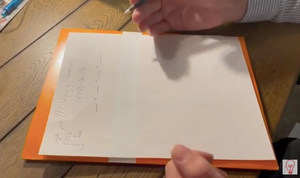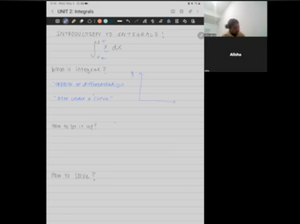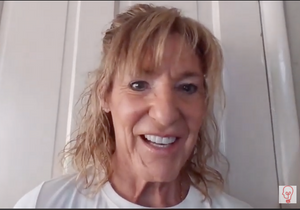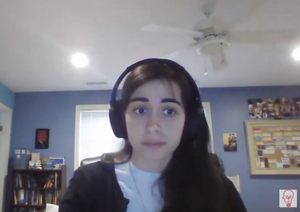Hi. So I wanted to walk you through a couple of the problems that you were having on your essay. I looked over your teacher comments, and I noticed that one of the things that she was looking for you to improve on is there integration of quotations which are just sort of what's known as a drops quotation right now, which are just where you finish a point and then you bring in a quote to support it, but they're not really well integrated or it's not really flowing really smoothly. So that's one thing that I wanted to work on with you. Just go over a couple of tricks. So I'm gonna do a screen sharing so I can show you a couple things.
So one of the things that I noticed is that your teacher this was one of the quotes in your paper that your teacher mentioned. So I thought we could look at this one. This is a great quote that you pulled out of a Steven Pinker article that could help you to say something in your paper. And so this was how the quote was presented. You had a point, and then you brought in this quote. This is a great quote, but the problem with it is just the way it's integrated right now, you can see that your sentence starts with the quotation marks and ends with the quotation marks and your citation. So that's known as a dropped quotation. There's nothing really wrong with it except for it just needs to be hooked or connected to your own ideas or your own thoughts more clearly, more transparently.

So what I'm gonna do is show you how to make it work. One of the things that you wanna do is let your reader know that you're about to start quoting. Your teacher did mention using signal phrases, and that's what a signal phrase is. It's just a simple phrase that you put at the beginning of your quote to connect it to your own words and to let your reader know that you're quoting. That's why it's called a signal phrase. It's like signaling. We're gonna start quoting now so that your quoting doesn't feel abrupt.
I just wanna show you how you can include a quick signal phrase. Here you go. If you see that, if I put a phrase like this in the front of your quote, according to Steven Pinker, then I flow into my quote. Then my quote isn't dropped into the essay. There's a little bit of from me words before it, and then it goes in. So that's known as a signal phrase. This is a really basic easy one according to, and then put the author's name in. This works for so many situations. I'll show you a couple other variations of this.

One of the other issues with this quote is you can see that the quote says, PowerPoint we are told is reducing discourse to bullet points, and then the rest of it kind of says similar things. But what you'll notice if you read the full paragraph is that Stephen Pinker himself actually is about to argue those ideas or show us that those ideas are actually misguided. So the way that you're presenting your quote isn't identifying that aspect of his quote statement, that he's actually disagrees with his own statement here, that he's about to offer a rebuttal. So we could do a little better, I think, with the signal phrase in terms of telling our reader a little bit more, not just who's saying it, but why they're saying it. So let's look at it even better. Signal phrase, let me show you one that would do a little bit better for us. Let's try this. So when we look at this one, we can see that it's doing thing in the signaling. Pinker argues this, and then here's my quote. But it also tells us a little bit about what he thinks about this statement. It tells us that he's arguing against this statement. So that's an even better way to signal, because you can signal and give the reader a little bit of information and be more transparent about the content of the quote so that you're presenting the quote in the context and with the meaning that it was intended to have and not obscuring the meaning or misrepresenting it.
Another thing that we might notice now is that this part of the quote here isn't really needed anymore because we're kind of doing that in the signal. We're telling them that these are points that he's arguing against that are made by a lot of people. So we can even take out that phrase. Now, PowerPoint is reducing this course, Search engines lower intelligence, and Steven Pink is arguing against those ideas. So we didn't really need that. So you could see that that's just a way to streamline our quote a little bit, even more so, maybe not the most essential part of this edit, but just something that would make it even better. One more way that you can do this. Sometimes students might feel like the previous sentence is doing enough to identify what you're quoting and why. And so that you don't really feel like you need this signal phrasing, but your teacher is still saying that you have a dropped quotation. Another way that you can fix this issue is by using a colon. So I'll show you this is a really easy way.
In your example here let's say your lead-in sentence prior to the quote, maybe told me the author and the article, and I kind of already know that stuff from what you've already said. So I just wanna bring in a quote, and I don't necessarily need a big heavy intro signal phrase. So this is a good example of when that might be true. Your sentence beforehand kind of is a signal phrase, but it's just a complete sentence already. So in this case, what we can do is really easily you wanna not end the sentence. You took away that period, and then you would, instead of ending the sentence, you're just gonna connect the sentence before to the quote and kind of merge them all as one big sentence. And you do that by using a colon. So you can see here the colon is a connector. It's saying, Here's what I read in the article, boom. And a colon kind of says, Here it is at on the side. So that's something to notice. This isn't a semicolon or a comma.

Sometimes students will stick a semicolon or a comma in to separate their sentences and their quotes. So a colon is the right punctuation to do that. And then you can kind of avoid the whole signal phrase thing altogether if you feel that you should about, this is when you're doing our signal phrases you could kind of think of Pinker states. Pinker says You can kind of imagine a lot of different ways that you could transition into your quote and you don't wanna be redundant and use the same one over and over again. So that's another thing to think about is if you have a paper with a lot of quotes, you just wanna vary your signal phrasing. I do have a little list of suggestions, and I can make sure that you have this to take with you just to come up with a bunch of signal phrasing variations.
You can see here, there's a few that I've already shown you but a lot of verbs can really, it's helpful to have a lot of verbs at your disposal to show what authors are doing so that you can use that in your signal phrases. Observes, argues, notes, asserts is a really good one. Points out notes suggests those kinds of things. And you'll see that I've pointed out a few different ways including ones that you can use. The article title instead of the author mentioned just saying, The author mentioned the article, instead of using the person's name over and over again, which also cuts down on repetitiveness. And then here, I've even showed you an example of how you can incorporate a quote within a quote from the article. Sometimes students wanna do that, and they're not really sure how to make those flow in. So next time we can talk about citations. But right now, I think maybe we'll dive in and you can go through each of your quotes and try to make sure that you're creating effective signal phrases and let's work on it together. So let me sit next to you and we'll go through each one and we'll see if you can use these strategies and see how far we get.

